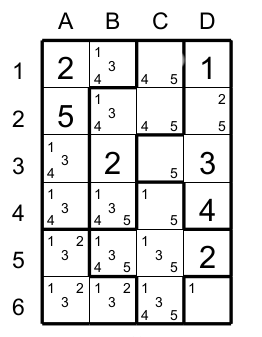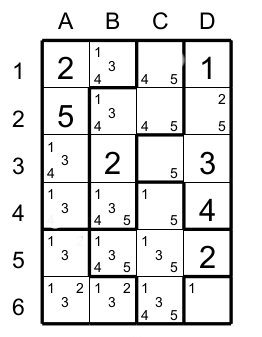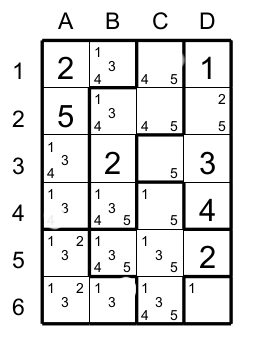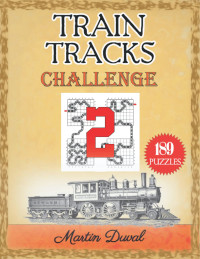Basic technics of resolution: the pair.
One of the most frequent and useful technic for solving Suguru is use of the pair. A pair is when two cells contain the same two candidates. To illustrate the concept, I use a Suguru that I have altered intentionaly the candidates in order to show you the effects of the pair. Obviously, by these alterations, I made the Suguru incoherent.
First of all we need to distinguish the location of the pair because you should be careful of this characteristic.
Look at the following figure 1.

Pair in the same region.
The region having the cells C1,C2,B2,B3 and B4 has a pair with the cell C1 and C2. Each one of these two cells has candidate 4 and 5. This means that these two numbers could only go in these two cell in this region. All the other cells in this same region, must not have the candidates 4 or 5. In this case we eliminate the candidate 4 in B2 and the candidates 4 and 5 in B4.
Pair in others regions.
If a cell from another region touchs the two cells from a pair in another region. Notice that the two cells having the pair must be in the same region. Then we could eliminate the candidates of the pair that are present in this cell. In this case the cell D2 touchs the pair C1 end C2. So the first condition is met : C1 and C2 are in the same region so we could eliminate 5 to D2. We could eliminate also the 4 to the cell B1 for the same reason.
Now to illustrate an other case, suppose that cells A4 and A5 have only candidates 1 and 3 (figure 2).

Now the situation is if a cell (the original cell) touch a pair from two different regions, we could eliminate the candidates present in the pair from the original cell only if the two cells of the pair are neighborgs of each one. In the figue 2 the cell A4 and A5 have the two same candidates (1 and 3). Because these two cell are neighbourg, it means that in anay case they could have a 1 and a 3. And because the cell B5 touchs these two cells then we can eliminate 1 and 3 in B5. This is very important that the two cells of the pair are neighbourgs.
If the cells pertaining to the pairs are not neighbourg like in the figure 3.

Now suppose that the cell B6 has the candidates 1 and 3 instead of A5. The cell B5 touchs two cells having a pair, A4 and B6) from two different regions, because A4 and B6 are not neighbourgs then it means that the two cells could have the same number either 1 and 1 or 3 and 3 or 1 and 3. So we are not sure of the final result and we are not able to affect B5. Except if we are able to link these two cell by a chain. this latest technics is explained in the advance technics.
These technics could be generalized to trio (three cells having the same candidates) with the necessary adjustments.

















Comments powered by CComment